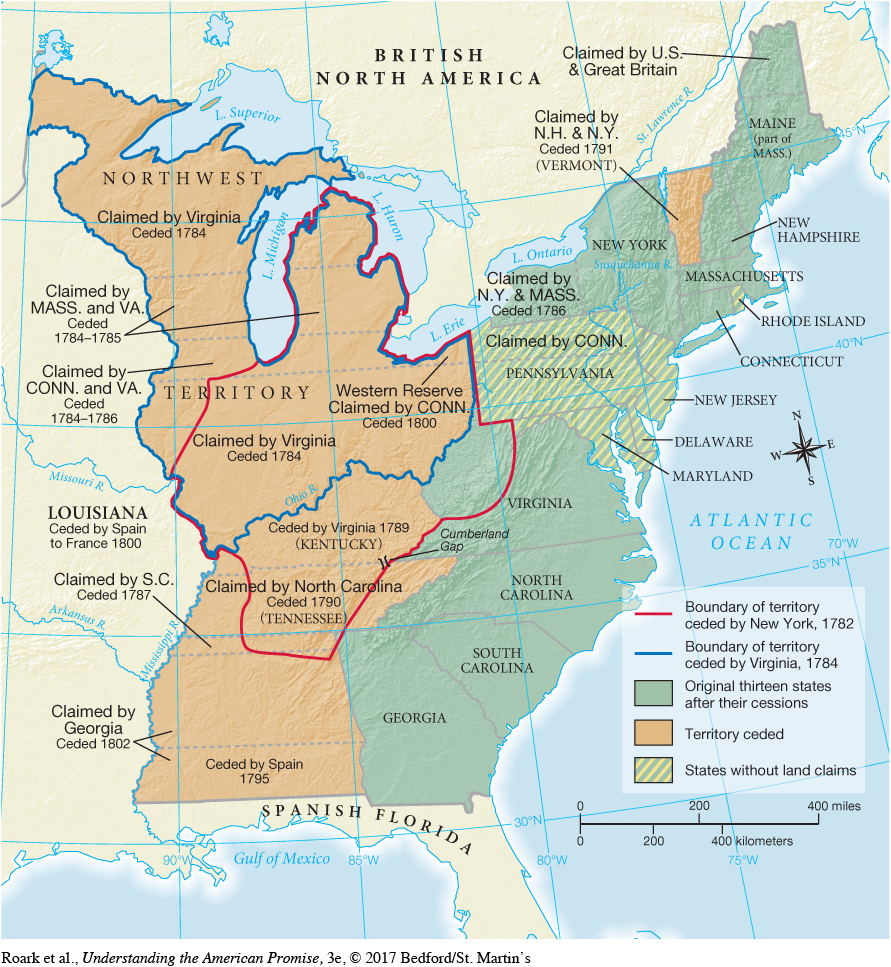The Problem of Western Lands
The most serious disagreement delaying ratification of the Articles concerned the absence of any plan for the lands to the west of the thirteen original states. This absence was deliberate: Virginia and Connecticut had old colonial charters that located their western boundaries at the Mississippi River, and six other states also claimed parts of that land. But five states without extensive land claims insisted on redrawing those colonial boundaries to create a national domain to be sold to settlers (Map 8.1). As one Rhode Island delegate put it, “the western world opens an amazing prospect as a national fund; it is equal to our debt.”[[LP MAP: M08.01 Cession of Western Lands, 1782–1802 – MAP ACTIVITY/

The eight land-claiming states were ready to sign the Articles of Confederation in 1777 since it protected their interests. Three states without claims—Rhode Island, Pennsylvania, and New Jersey—eventually capitulated and signed, “not from a Conviction of the Equality and Justness of it,” said a New Jersey delegate, “but merely from an absolute Necessity there was of complying to save the Continent.” But Delaware and Maryland continued to hold out, insisting on a national domain policy. In 1779, the disputants finally compromised: Any land a state volunteered to relinquish would become the national domain. When James Madison and Thomas Jefferson ceded Virginia’s huge land claim in 1781, the Articles of Confederation were at last unanimously approved.
The western lands issue demonstrated that powerful interests divided the thirteen new states. The apparent unity of purpose inspired by fighting the war against Britain papered over sizable cracks in the new confederation.
Understanding the American Promise 3ePrinted Page 199
Section Chronology